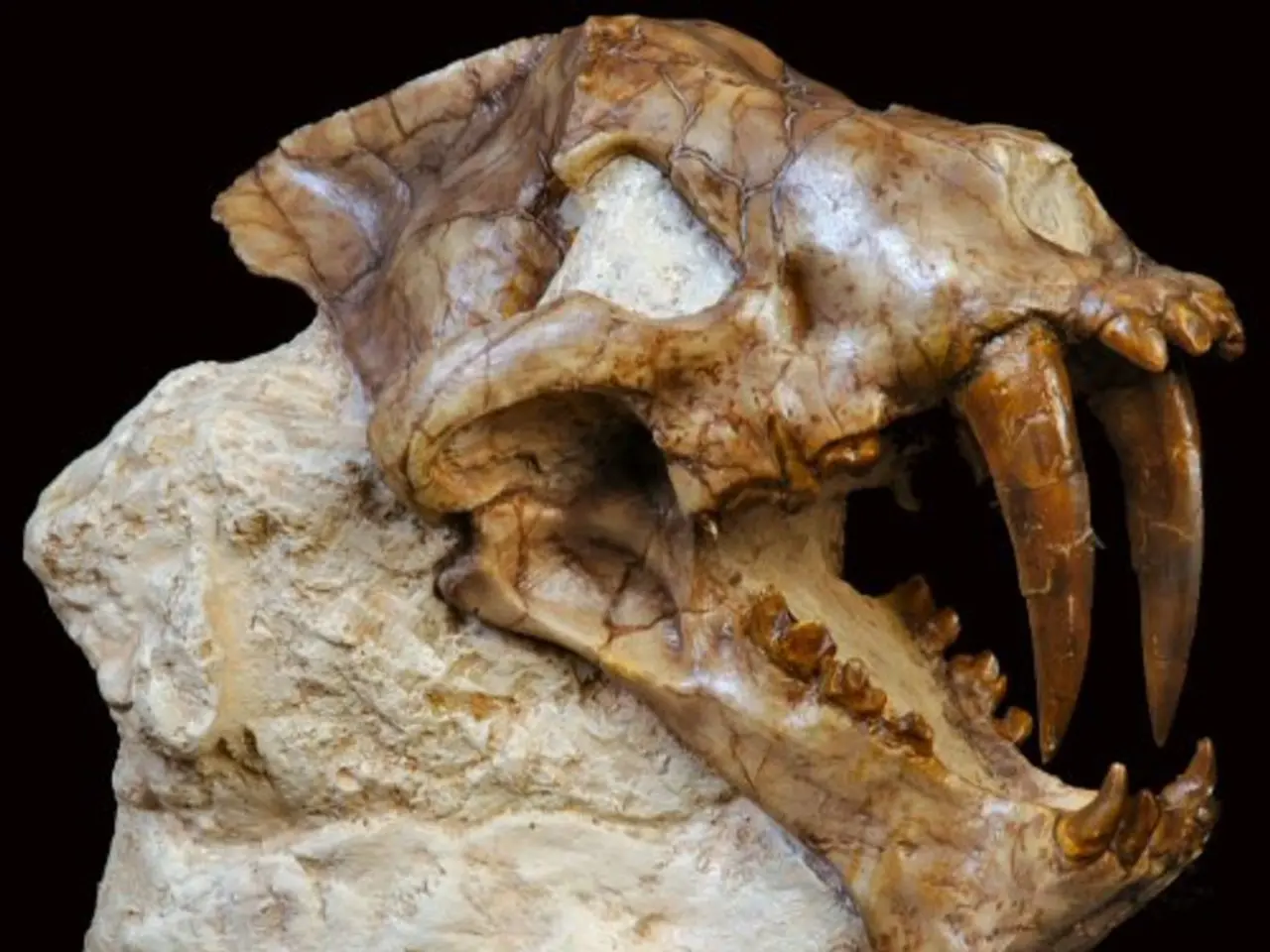Archaeologists Astonished by 220-Million-Year-Old Marine Dragon's Presence in a Japanese Museum, Bloody Marvel!
In a groundbreaking find, a 220-million-year-old ichthyosaur fossil has been discovered in Takahashi City, Okayama Prefecture, Japan. This discovery, housed at the Nariwa Museum of Art for years, marks Japan's first Late Triassic ichthyosaur fossil and the first confirmed ichthyosaur discovery in western Japan [1][2].
The fossil, first reported during the Paleontological Society of Japan's annual meeting in June 2025, was discovered during an educational program on July 26, 2023. The find was made by Professor Takafumi Kato and Dr. Hirokazu Yukawa. Initially, the fossil was misidentified as a Monotis bivalve, but upon closer examination, it was confirmed as an ichthyosaur fossil, including ribs, vertebrae, and a scapula [1].
This fossil provides invaluable clues into the adaptation and evolution of these marine reptiles. It dates to the Norian stage of the Late Triassic (approximately 227 to 206 million years ago), a critical time when ichthyosaurs were transitioning from coastal to fully open-ocean forms [1][2].
In terms of ichthyosaur evolution, this fossil offers essential evidence of advanced ichthyosaurs capable of open-ocean life at a time when such forms were extremely rare in the fossil record globally. Until now, well-preserved Late Triassic ichthyosaurs were mostly known from distant locations like British Columbia, Canada. The presence of this ichthyosaur in Japan implies these marine reptiles could cross the vast Panthalassic Ocean — the superocean surrounding the supercontinent Pangaea — suggesting a much broader geographic range for advanced ichthyosaurs than previously documented [1].
The fossil’s anatomical features, such as thin hourglass-shaped vertebrae with two rib articulation surfaces, grooved ribs with a gourd-shaped cross-section, and a slender, constricted scapula, indicate a potentially high swimming ability. This supports the hypothesis that ichthyosaurs had evolved significant adaptations for open ocean life by the Late Triassic [1][2].
This discovery extends the known geographic distribution of Late Triassic ichthyosaurs to western Japan, provides new data on ichthyosaur evolutionary transitions from coastal to open-ocean species, and suggests that ichthyosaurs had a global range across the Panthalassic Ocean, highlighting their advanced dispersal capabilities during the Triassic period. These insights underscore the fossil's importance in understanding both the evolution and paleobiogeography of ichthyosaurs during a pivotal evolutionary phase [1][2].
The discovery is a significant boost for the local museum and a potential catalyst for further paleontological discoveries in the region. Mayor Yoshio Ishida of Takahashi City expressed his excitement and hope for future research. The fossil is seen as an opportunity for regional revitalization and public interest in Takahashi City.
The Nariwa Museum of Art, where the fossil was discovered, has played a crucial role in preserving the region's geological history. The museum serves as an educational hub, and its continuous maintenance and management of regional materials contributed to the discovery.
Dr. Ryosuke Motani, a renowned expert, emphasises that the Norian stage of the Late Triassic is a crucial time in ichthyosaur evolution. The discovery of this fossil sheds new light on ichthyosaur evolution, expanding our understanding of these ancient marine reptiles. The fossil's scapula, in particular, may indicate a high level of swimming ability in the creature, according to Professor Kato.
In conclusion, the discovery of the ichthyosaur fossil in Japan offers valuable insights into the adaptation and evolution of these marine reptiles, suggesting a broader geographic range and advanced dispersal capabilities during the Triassic period. This find is a testament to the rich geological history of the region and opens up exciting possibilities for further research and discovery.
Science and environmental-science communities worldwide are abuzz with the recent discovery in Japan, a 220-million-year-old ichthyosaur fossil that hints at advanced technology for open-ocean life in the Triassic era. In space-and-astronomy terms, this find marks a significant leap in understanding the history of life on Earth, as it points to the marine reptiles' ability to cross vast oceans like the Panthalassic Ocean, expanding their geographical range.




